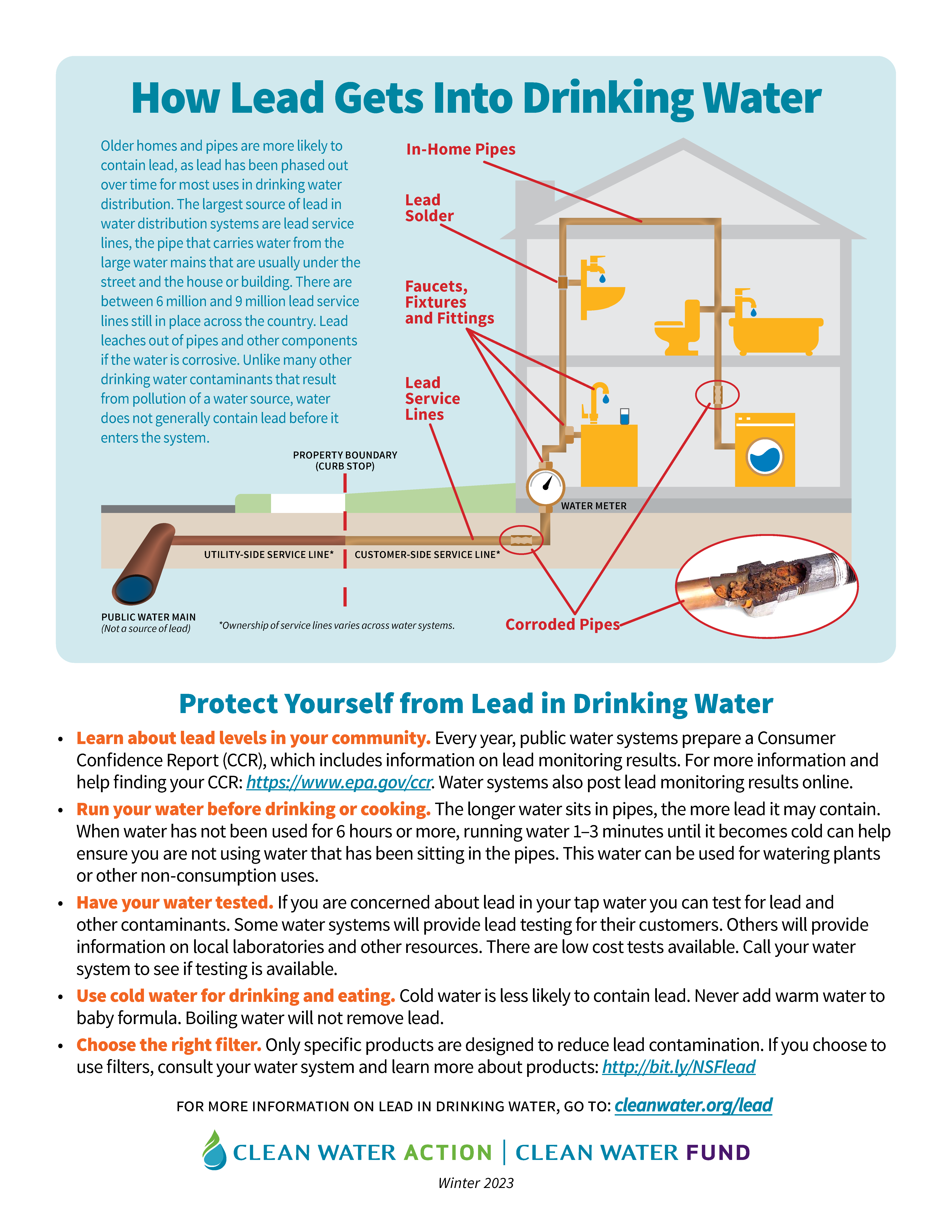Lead is a highly poisonous metal and can affect almost every organ in the body and the nervous system. People can be exposed to lead through inhalation, ingestion and to a lesser extent, dermal contact. Because they absorb more lead than adults and because their brains and nervous systems are still developing, children under 6 and the developing fetus are most susceptible to lead exposure. Even low-level exposure to lead is linked to cardiovascular disease in adults. The most common source of lead exposure is ingestion of old lead paint. The U.S. Environmental Protection Agency (EPA) estimates that lead in drinking water can be 20% or more of a person’s lead exposure.
Getting the Lead Out
To protect public health, we must reduce lead exposure at the drinking water tap. To make this a reality Clean Water Action and Clean Water Fund are:
- working for improvements in the Safe Drinking Water Act Lead and Copper Rule (LCR), which EPA is expected to propose in late 2023;
- supporting communities and water systems in accelerating full replacement of lead service lines through our work with the Lead Service Line Collaborative (www.lslr-collaborative.org);
- ensuring that water infrastructure funding made possible by the bipartisan Infrastructure Investment and Jobs Act (IIJA) is spent equitably and effectively, including the $15 billion available for lead service line replacement.
Download This Factsheet (English)

